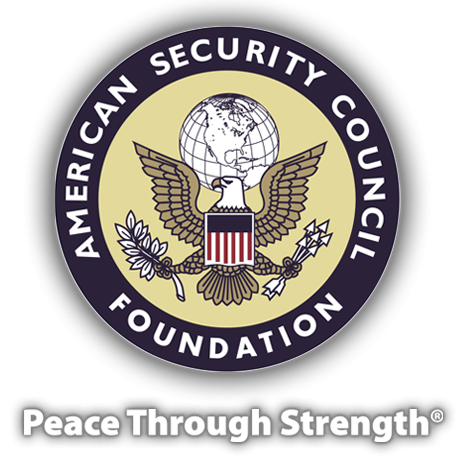US Navy's budget battles could end in 'victory at sea' for China
The Trump administration’s defense budget, released earlier this month, includes a $3 billion overall decrease for the Navy and a nearly 17 percent cut in its shipbuilding account from the current year’s budget. This will pay for no more than six combatant ships, nor will it advance the administration’s goal of a substantially larger U.S. combat fleet. By contrast, the early 1980s naval buildup annually turned out ships in double-digit numbers.
Meanwhile, China — the chief U.S. naval antagonist — continues its naval armament at an impressive pace. Anecdotal but persuasive is a recent photograph taken from an airplane window of the Shanghai shipyard; in it can be seen nine destroyers, one amphibious hovercraft, and one aircraft carrier under construction.
Submarines don’t appear in the photo. They are built elsewhere — for example, at the Bohai Shipyard in Liaoning Province. The 2019 U.S. Defense Department’s report on China’s military stated that the Peoples Liberation Army Navy’s undersea force “will likely grow to between 65 and 70 submarines” by the end of this year. The current U.S. submarine fleet numbers slightly above 50 more capable boats which, when deployed, are distributed around the world.
At its current rate, China’s naval fleet will reach well more than 400 ships by the midpoint of the next decade. Were the U.S. to increase its resources devoted to naval shipbuilding — and double its average spending on shipbuilding over the past 30 years — there is a chance of reaching the administration’s goal of 355 ships before the disparity in capacity between China and the U.S. reaches the tipping point.
Even then, China would still enjoy the advantage of its proximity to the contested waters in and around the South China Sea, while a conflict would require the U.S. to all but abandon its global presence and concentrate on the West Pacific, a swing in forces that would take weeks, under the most favorable circumstances.
As an example of the Trump administration’s naval shipbuilding plans for the coming fiscal year, the two submarines — which the Navy had included in its previous budget to build this year — were decreased to one, a cut that is unlikely to survive congressional scrutiny. But that proposed reduction is key to understanding the large question that sits above fleet numbers, budgets and technology.
A conflict with China would be a naval contest. Archipelagos circumscribe China’s Pacific coast, and archipelagic states sit astride the oceanic routes that connect East Asia with the Middle East, Africa and Europe. Holding choke points along these routes would decide the flow of shipping. Within and beyond the choke points lie thousands of miles of sea, the control of which would determine the victor in war.
Having learned from the uncontested approach of U.S. forces in the Persian Gulf wars of 1991 and 2003, China has sought to deny the U.S. the same opportunity in East Asia. It has constructed a network of land-based naval aviation, long-range anti-ship missiles, militarized islands in international waters, a large submarine force, space-based and cyber capabilities, and a burgeoning surface fleet that can project power into the Indian Ocean and beyond the First Island chain.
Known collectively as anti-access/area denial (A2/AD), the goal of these capabilities is to snap U.S. communications with its East Asian allies and keep the U.S. Navy far enough away to forestall any threat to critical shore-based naval and military facilities. Of equal strategic importance to China is achieving such objectives as the invasion of Taiwan, the neutralization of Japan, and secure sea lines of communication through which Chinese naval and merchant shipping can flow freely.
This is where submarines come in. China’s A2/AD network exposes non-stealth surface ships to heightened risk from anti-ship missiles and land-based naval aviation, as well as lethal interruptions in the communications networks that are now deeply woven into the fabric of U.S. naval warfare. Submarines glide beneath this threat — not impervious, as underwater listening devices and enemy submarines testify, but still relatively stealthy and a backbone of any successful effort to penetrate China’s A2/AD systems. Add swarms of underwater unmanned vehicles to U.S. submarine capability, and the strategic balance moves favorably in our direction. The U.S. should build more submarines, beginning immediately.
But the overhanging question remains: What strategy governs our use of subs — or any other instrument of naval power? What is the strategic goal of the U.S. and allied effort? Is it to attack China’s war-making industrial capacity? Is it to roll back China’s A2/AD network with the expectation that China, once exposed to attack from the sea, will seek terms? Is it to fight a holding action while destroying China’s ballistic missile-carrying submarine capacity, thus nullifying their recourse to a nuclear attack against the U.S.? Is it to control the choke points and seas on which the Chinese economy depends for continued prosperity — and the Communist Party depends for its survival?
About this most important question — its strategic goal — the Navy is silent.
The silence is compounded by the absence of the Navy’s “force structure assessment,” or FSA, stating what kinds of ships are needed in the future. Since the National Defense Strategy has emphasized the re-emergence of great-power competition with particular attention on Russia and China, the FSA should call for a naval force that can deter and, if necessary, defeat China at sea.
The FSA was scheduled to have been delivered in December. It’s late. Since the president’s budget has already been submitted, the FSA will not influence the Navy’s request for the coming fiscal year.
The U.S. Navy’s strategic bewilderment is pervasive and unhelpful. At the Naval Surface Association’s Jan. 14 meeting, Chief of Naval Operations (CNO) Adm. Michael Gilday was asked “how do you appeal” to the average taxpayer/citizen in explaining what the Navy does and why it’s worth spending money for maritime security. The CNO answered correctly that “Americans are primarily looking inward.” He observed that the Pentagon’s audit process identified savings of $42 billion last year.
But his answer to the question of how to make Americans understand the importance of seapower was puzzling: “I don’t have a good answer, except to ask people when they have the opportunity to go out there and talk about the United States Navy and what we do.” The Navy’s budget situation is unlikely to improve, he said, “unless I make the case of why the Navy’s important.”
Achieving the needed budget numbers, fleet design and size will only happen by luck if there is no overarching idea of how the Navy expects to achieve the national objective of preventing or winning a war with China. A strategy would tell us this. It is the question that precedes all others in protecting the U.S. against the emerging threat that is China. Its answer will materially advance this or any administration’s ability to argue convincingly for the shape, size, and resources to defend against what both political parties agree is a growing threat to U.S. security.
Seth Cropsey is a senior fellow at the Hudson Institute, a conservative Washington-based think tank focusing on U.S. leadership in global affairs, and is director of its Center for American Seapower. He served as a naval officer and as deputy undersecretary of the Navy in the Reagan and George H.W. Bush administrations.











